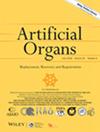Hemofiltration system for the post traumatic treatment of hyperkalemia in austere conditions
Abstract
Background
Hyperkalemia, the buildup of serum potassium to levels >6 mEq L−1, has been a recognized complication of combat injuries such as acute kidney injury since World War II. Currently, renal replacement therapy (RRT) serves as the standard of care for hyperkalemic patients who fail to respond to medical management. However, RRT is difficult to administer in combat settings, and the time between evacuation and RRT is critical in preventing post-traumatic hyperkalemia. Therefore, the need for portable, easily operable hemofiltration technology is pressing to improve the survival of hyperkalemic patients in austere settings.
Methods
In this manuscript, we present extra-corporeal direct contact and hemodialysis filtration systems for treating severe hyperkalemia and tested the efficacy, biocompatibility, and performance of a zeolite-based renal RRT. We tested the uptake capacity of an adsorbent zeolite optimized for the selective binding and removal of potassium in various mediums, including dialysate, bovine serum, and whole bovine sodium heparinized blood.
Results and Conclusions
Our results show that we can restore physiological normokalemic levels within just 2 h of testing and maintain these levels for 6 h. Furthermore, calcium and sodium levels were maintained within normal physiological ranges, confirming the selectivity of our sorbent material for potassium binding.


 求助内容:
求助内容: 应助结果提醒方式:
应助结果提醒方式:


